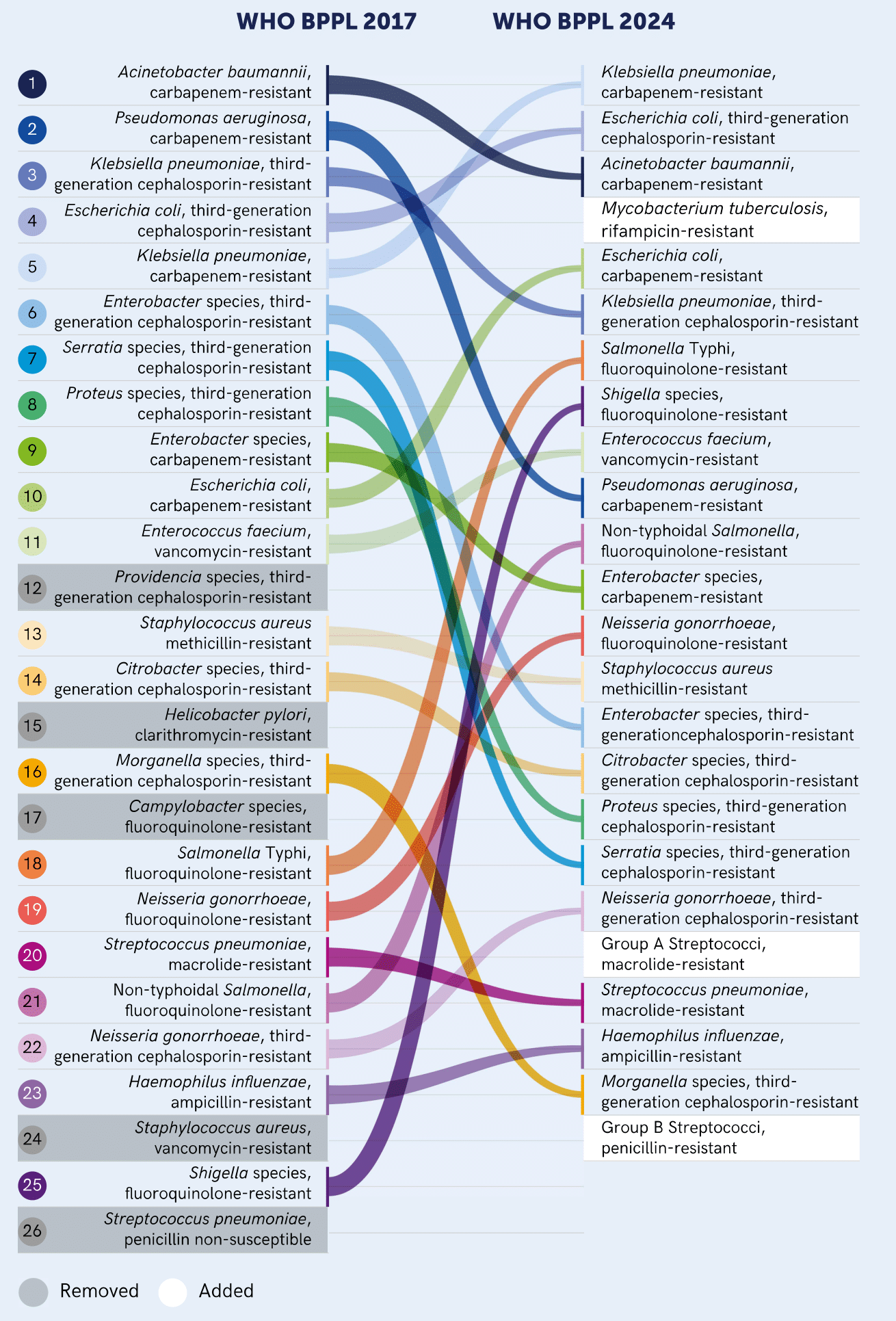Prof Samuel Sheppard, Principal Investigator of IOI’s digital microbiology programme, recently released an open letter expressing concern over the removal of several clinically significant bacterial strains from the World Health Organisation’s (WHO) Bacterial Priority Pathogens List (BPPL).
The BPPL, first created in 2017, lists the most globally concerning antimicrobial-resistant (AMR) pathogens according to several factors such as their mortality, transmissibility, and prevalence. It’s an important tool in the worldwide fight against AMR, used as a guide for which bacteria are most in need of research and intervention.
In a 2024 update to the list, new surveillance and research data led to the priority levels of many bacterial strains being changed, the addition of 3 new strains, and the removal of 5 others.

Diagram summarising the changes between the 2017 and 2024 BPPL. For an accessible version of this image, please see page 7 of the WHO BPPL 2024.
In an open letter to the WHO published in Microbial Genomics Prof Sheppard argues that the removal of these bacteria, including fluoroquinolone-resistant Campylobacter, clarithromycin-resistant Helicobacter, and penicillin-non-susceptible Streptococcus, was done without clear justification. He further suggests that their omission from the list could be a setback to research into these bacteria, despite their global prevalence and measurable impact on public health, especially in low-and-middle income countries (LMICs).
The WHO decision to remove the most common bacterial cause of food poisoning (Campylobacter) and the most common cause of gastric cancer (Helicobacter) from the priority pathogen list is shocking because it implies that these antimicrobial resistant organisms are becoming less important. In fact, they’re increasing!

Prof Sheppard suggests that the WHO may have underestimated the prevalence of bacteria like Campylobacter and Helicobacter due to limited capacity for AMR surveillance in LIMCs. His open letter ends with several recommendations for better assessment of bacteria in the BPPL, as well as better monitoring of AMR around the world and an understanding of regional trends.
Diarrhoea is unglamorous and understudied, but it remains the second most important global cause of death among children. Global public health plans should not focus solely on pathogens that affect wealthy people in rich countries.

Find out more about IOI’s work in campylobacter and AMR surveillance:
